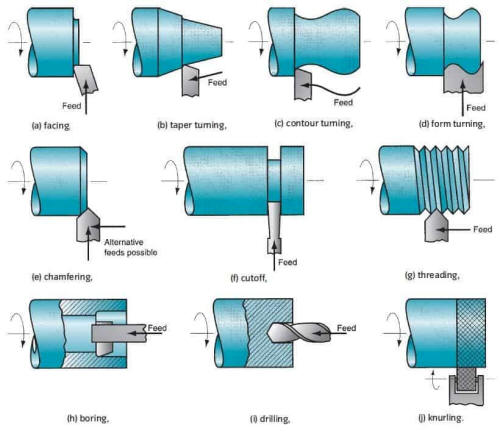|
Centre Lathe turning operations |
|
|
Turning is a form of machining, a material
removal process, which is used to create rotational parts by
cutting away unwanted material. The turning process requires
a turning machine or lathe, workpiece, fixture, and cutting
tool. The workpiece is a piece of pre-shaped material that
is secured to the fixture, which itself is attached to the
turning machine, and allowed to rotate at high speeds. The
cutter is typically a single-point cutting tool that is also
secured in the machine, although some operations make use of
multi-point tools. The cutting tool feeds into the rotating
workpiece and cuts away material in the form of small chips
to create the desired shape. Turning is used to produce rotational, typically axial-symmetric, parts that have many features, such as holes, grooves, threads, tapers, various diameter steps, and even contoured surfaces. Parts that are fabricated completely through turning often include components that are used in limited quantities, perhaps for prototypes, such as custom designed shafts and fasteners. Turning is also commonly used as a secondary process to add or refine features on parts that were manufactured using a different process. Due to the high tolerances and surface finishes that turning can offer, it is ideal for adding precision rotational features to a part whose basic shape has already been formed. |
|
The following is some of the more common
turning operations:
|
|

TVET COLLEGE SUPPORT
CENTRE LATHE
